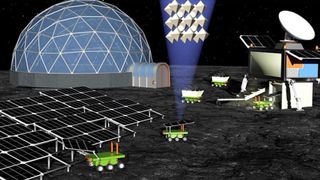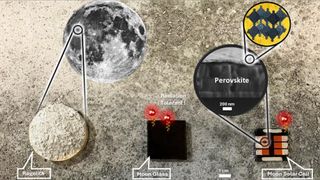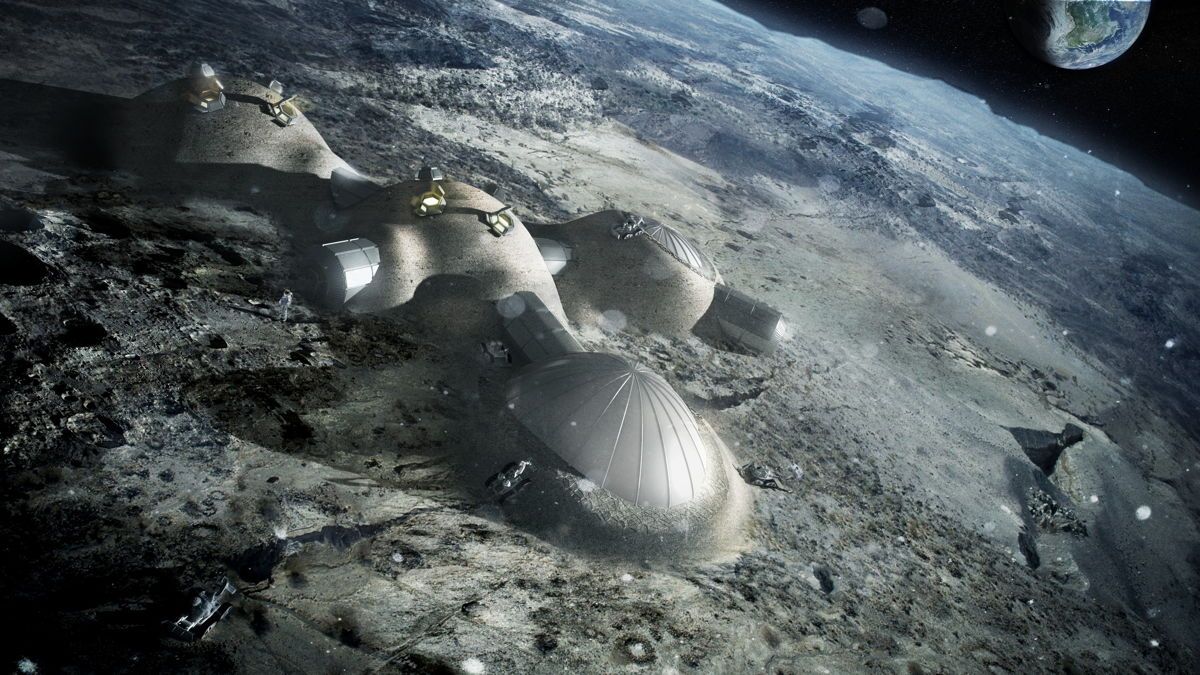Moon dust is quickly becoming a magic material, from which oxygen and other elements such as titanium can be extracted, that can be compacted down to form bricks to construct lunar shelters, or "lunarcrete" to bind those bricks. And now, scientists have shown how lunar regolith can be turned into solar cells.
"From extracting water for fuel to building houses with lunar bricks, scientists have been finding ways to use moon dust," Felix Lang, of the University of Potsdam in Germany, said in a statement. "Now, we can turn it into solar cells, too, possibly providing the energy a future moon city will need."
Traditional solar cells incorporate Earth-manufactured glass, which can be relatively heavy, increasing launch costs. Manufacturing solar cells on the moon from local materials is therefore an attractive proposition.

To test the idea, Lang led a team who experimented with a lunar dust simulant. Samples of material from the moon are in short supply and precious to scientists. Therefore there's a cottage industry, spearheaded by NASA's Simulant Development Laboratory, which creates different types of simulated lunar regolith. (Regolith is the technical term for the material that sits on the surface of the moon, comprised of dust and fragments of impact ejecta).
Related: China plans to build moon base at the lunar south pole by 2035
Lang's group melted some of this simulated regolith to form "moonglass." This is a simple process that doesn't require any difficult purification and can be achieved simply by focusing sunlight falling onto the moon to achieve high temperatures.
The moonglass is then combined with perovskite, which is a crystalline material commonly used in solar cells that do the job of absorbing sunlight, which excites electrons in their atomic structure. An electrode then attracts these excited electrons and creates an electric current.
A team of scientists from Blue Origin, Jeff Bezos' aerospace company, have previously proposed a similar way of constructing solar cells on the moon.
Moonglass has several advantages over regular glass manufactured from terrestrial material. In space, ordinary glass tends to brown, which begins to block some of the incoming sunlight, reducing a solar cell's efficiency. Moonglass already has a natural brown tint as the result of impurities in the regolith, and this actually prevents it from browning any further. It is also more resistant to radiation, which is an important consideration in space when there are cosmic rays flying left, right and center.

Where the moonglass-based solar cells are lacking is in their efficiency. Traditional solar cells used in space have an efficiency — that is, what percentage of incident sunlight they convert into electricity — of between 30% and 40%. The moonglass-based solar cells currently have an efficiency of just 10%, but Lang's team think they can get the efficiency up to 23% by removing some of the impurities in the moonglass.
Even if they can't, however, the lower efficiency isn't necessarily a problem. "You don't need ultra-efficient 30% solar cells; you just make more of them on the moon," said Lang. Plus, there are benefits in making the solar cells on the moon; doing so reduces the launch mass and cost from Earth, saving 99% of the material transport weight.
Related: NASA may build more than one moon base for Artemis lunar missions
There are still unanswered questions. Manufacturing solar cells from a lunar dust simulant in Earth-normal gravity is one thing; making them in low gravity is another, and it could be that the low gravity affects how well the moonglass forms. The solvents used to process perovskite might also degrade when exposed to vacuum conditions, while the large temperature variations between lunar day and night might affect the stability of the solar cell as materials expand and contract.
To try and answer some of these uncertainties, Lang's team argue for a small-scale mission to the moon to test the solar cells in real lunar conditions. The rewards, if successful, could be enormous, providing power to moon bases and making long-term settlement of the moon more plausible. Such a base could be located at the moon's southern pole, where there is plenty of water ice hidden inside permanently shadowed craters, and from where the sun is visible constantly, avoiding the two-week-long nights elsewhere on the moon that cut short any solar-powered missions.
The research is described in a paper published in the journal Device today (April 3).

.jpg) 23 hours ago
1
23 hours ago
1

 English (US)
English (US)